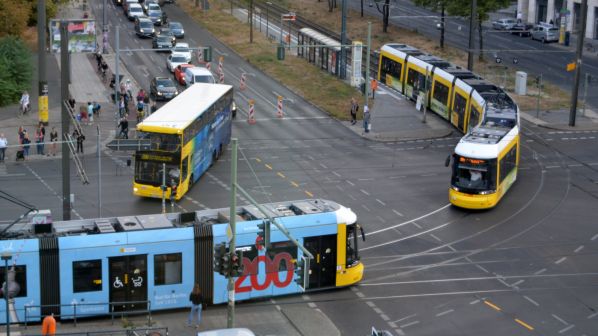The contract, which comes into effect on September 1, will run until 2035 and has already been approved by BVG’s supervisory board.
“This transport contract marks the beginning of a new era of investment,” says senator for the environment, transport and climate protection, Ms Regine Günther. “In the coming years, BVG will renew, expand and convert its fleet and network in a climate-friendly manner offering significant improvements. This is exactly the right way to make public transport so attractive that Berliners and their guests make the switch from private cars.”
The contract has an initial value of up to €12.7bn, including the basic remuneration for operation and subsidised services for passengers such as students and passengers with limited mobility. The tariff compensation totals around €3.1bn.
The plan also includes €4.3bn in additional grants, with around €2bn for construction of new light rail lines, around €1.7bn for maintenance and renovation, and around €600m for ongoing projects such as the U5 extension. Another €2bn has been allocated to support decarbonisation efforts, with between €1.3bn and €2.4bn earmarked for infrastructure improvements. Federal grants are expected to cover part of this investment although these are yet to be confirmed. The contract also includes €450m for the operation of 227 e-buses.
The planned investment over the next 15 years is more than double the current rate. Over the last 10 years, BVG invested €300m a year in vehicles and infrastructure, but this is set to rise to €800m annually over the coming decade with BVG set to invest €2.4bn and €750m in renewing and expanding the respective metro and light rail fleets by 2030. This includes trains for new lines and to improve performance on the existing network.
In response to the coronavirus pandemic, the contract includes a financing guarantee whereby the state will cover all pandemic-related revenue losses until the first revision in 2024, which will also allow adjustments to be implemented from 2031 if needed.
In addition, the contract includes a network accessibility guarantee to ensure the network is fully accessible to passengers with reduced mobility with specific alternatives in place in the event of malfunctions such as the failure of elevators.
Light rail expansion
Plans are in place to expand the light rail network by nearly 40% over the next 15 years to increase transport options to new property developments and in densely populated areas. A 10-minute frequency will be introduced during the day to make light rail services more attractive. The contract also include investment in long-term training to cover the increased need for drivers.
During the senate meeting on July 7, when the contract was approved, Günther also provided an update on the expansion of the light rail network:
- the extension of the M2 light rail line from Heinersdorf towards Blankenburg S-Bahn station was approved on June 9, with the route now being specified
- planning for a light rail line from the Pankow S-Bahn and U-Bahn station via Heinersdorf to Weißensee is currently being finalised
- preliminary planning is underway for the Alexanderplatz - Potsdamer Platz line, with studies to extend the line from Potsdamer Platz to Rathaus Steglitz due to take place in close coordination with this process
- basic studies have been completed for the extension of M10 beyond Turmstrasse station. On December 17, 2019, the Senate decided to continue planning the light rail route from Turmstrasse U-Bahn station to Jungfernheide S-Bahn and U-Bahn station. The contract for further planning services is currently being awarded in collaboration with BVG, and
- the studies to extend M10 to connect the Warschauer Straße S-Bahn and Hermannplatz U-Bahn stations are currently being finalised.
For detailed data on light rail projects from around the world, subscribe to IRJ Pro.

